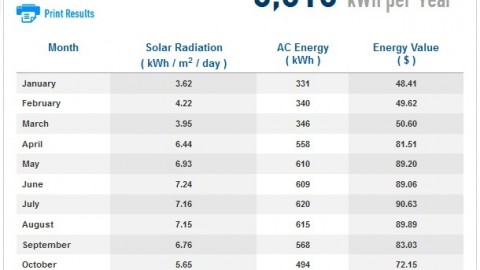Solar Roadmap Highlight
ASTI Newsletter | December 2013 Edition | By Rachel Liesching and Eileen Hays
In just one year, the market size of the solar industry in the United States grew by nearly $3 billion, up to $11.5 billion from 2011’s $8.6 billion, according to the U.S. Solar Market Insight Report from GTM Research. As the Solar Roadmap’s market potential assessment demonstrates, all solar markets are local and each region holds millions of dollars in untapped economic impact. For instance, the small town of Cortez, CO is estimated to have nearly $5 million dollars of solar market potential, while a larger city like Washington, D.C. could see upwards of $847 million dollars worth of economic growth by supporting solar market transformation.
The Solar Roadmap helps your community determine its solar market potential with a customized snapshot of the potential economic, generation, and environmental benefits of solar adoption. Shown below is an overview of how some of these key metrics are developed using the latest national, local and state data.
Local Impact of 5% Electricity from Solar Power
What if just 5% of a city or county’s total energy consumption came from locally produced clean solar power? That’s the key question that economic development and sustainability managers ask when they are setting goals and developing community programs to encourage solar power adoption.
Each participating agency has tailored calculations that describe the potential economic, job and carbon reduction benefits from offsetting just 5% of the community’s total electricity needs. While this number may seem aggressive, it is an achievable target that is well below most states’ existing Renewable Energy Portfolio Standards (RPS) and falls within the planning for leading utilities’ solar development goals.
Economic impacts are assessed based on total community-wide energy consumption and the related capacity of solar production required to meet the 5% target, along with the calculated environmental benefits. The ASTI team utilizes industry standard resources, like the National Renewable Energy Laboratory’s (NREL) System Advisor Model and the Jobs and Economic Development Impact (JEDI) Photovoltaic Model, with data from the U.S. Census and Energy Information Administration (EIA), to estimate the potential for installed solar and kWh energy generated annually to meet 5% of the community’s energy needs with locally generated power.
The market assessment describes the quantified benefits to provide a convincing case for local governments to support solar deployment and make the process for “going solar” easier and more cost-effective for their residents. Regional stakeholders and officials from participating jurisdictions have expressed a tremendous interest in these local metrics, as well as a desire to capture solar market potential.
For details on the methodology and assumptions used in assessing the market potential in your community, visit http://nmy.solarroadmap.com/userfiles/Solar-Potential-Methodology.pdf.







